
 |
|
 |

| Electrical waves are generated continuously in space by the magnetic lines and electrical force lines created when an alternating current is passed through a conductive wire. Electrical waves are affected by conditions in the ionosphere and atmosphere, as well as by obstacles on the surface of the earth.Their motion is also dependent on the frequency of the waves. |
| How Are Electrical Waves Generated? |
| When the power supply on the left causes alternating current to flow through the coil, a current is produced in the coil on the right, and the light bulb goes on. |
However, the magnetic force and electrical force also produce an effect through space whether or not a coil and iron core are present. This phenomenon produces a continuous wave form in space. |
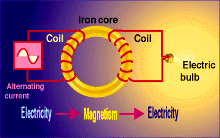 | 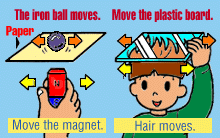 |
| This phenomenon produces a continuous wave form in space. |
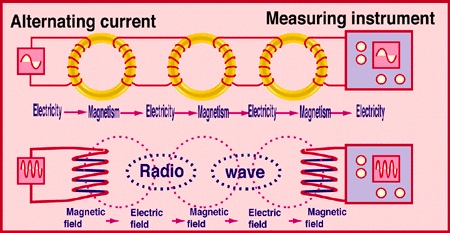 |
| How Do Electrical Waves Travel? The electrical field and magnetic field created by an alternating current vary in strength as they travel, and act at right angles to each other. (This is called a transverse wave.) Unlike sound waves, which must create vibrations in the air or other substance through which they travel, electrical waves are able to travel in a vacuum. The speed of electrical waves is the same as the speed of light, about 300,000 km per second. Like light, they can also travel in straight lines, or be reflected, refracted, diffracted or dispersed as they travel. Refraction means changing of direction at the boundary between different substances, and diffraction is a discontinuous effect produced by bending around an obstacle. Low-frequency signals are more easily refracted, so that they are reflected from the ionosphere. They are also more easily diffracted and so are able to travel around obstacles. |
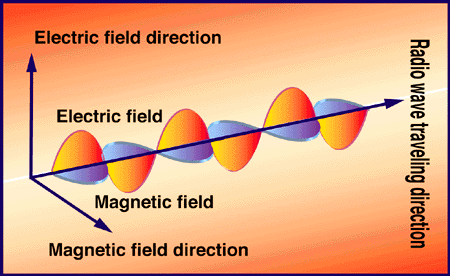 |
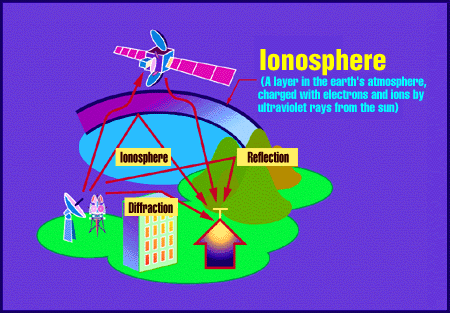 |


|
Return to the Gakushukan Home Page | ||

|
Back | Forward |

|